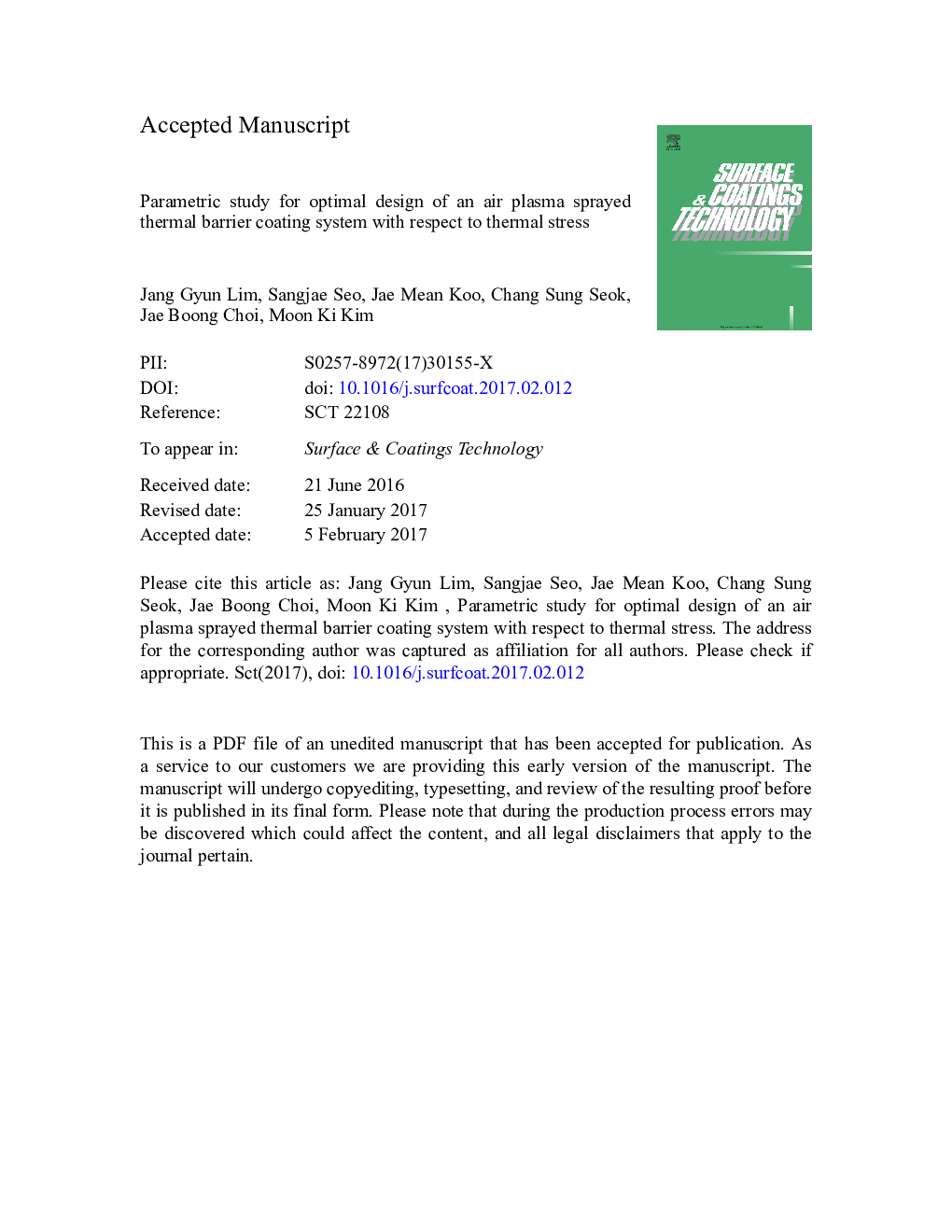| Article ID | Journal | Published Year | Pages | File Type |
|---|---|---|---|---|
| 5464662 | Surface and Coatings Technology | 2017 | 32 Pages |
Abstract
The use of thermal barrier coatings (TBCs) is expected to become more popular in various gas turbines because these coatings provide excellent thermal insulation and damage protection. However, unexpectedly early failure has often discouraged the full use of TBC, resulting in a shortening of the life span of gas turbines because these substrates are directly exposed to harsh operation conditions. The general mechanics of TBC and its complex inner phenomena, mainly related to failure, have been investigated to prolong the lifetime of TBC. However, our understanding is limited because TBC has various specifications and operating conditions, and complex interplays between many factors. The primary goal of this study is to construct an extensive finite element method (FEM) model to evaluate thermal stress of an air plasma sprayed TBC under its operating conditions by considering various inner phenomena, including thermal grown oxide, undulating topology of coating interface, aluminum depletion, creep effect, and elastoplastic deformation. With the proposed FEM model, a parametric study has been conducted with respect to a variety of material properties, as well as the thickness of bond coat and of top coat. The influence of each design factor on thermal stress and the other parameters is fully discussed. Finally, this work leads to optimal design criteria for minimizing thermal stress across a wide range of TBC systems.
Keywords
Related Topics
Physical Sciences and Engineering
Materials Science
Nanotechnology
Authors
Jang Gyun Lim, Sangjae Seo, Jae Mean Koo, Chang Sung Seok, Jae Boong Choi, Moon Ki Kim,
